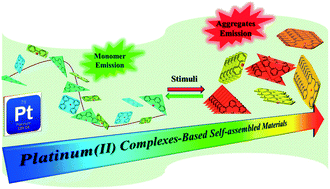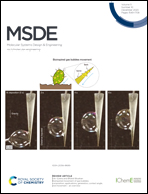Visual self-assembly and stimuli-responsive materials based on recent phosphorescent platinum(ii) complexes
Abstract
Platinum(II) complexes with various π-conjugated ligands have received great attention thanks to their exceptional spectroscopic properties and applications in optical devices, chemical sensors, and bio-imaging. Their unique square-planar structures and coordinate-unsaturation characteristics induce the propensity to form self-assembled phosphorescent materials through metal–metal, π–π stacking, and other intermolecular interactions. In this review, we mainly describe the photophysical properties and structure–property relationships of multi-chelating platinum(II) complexes as well as the construction and application of phosphorescent supramolecular materials in recent years.



 Please wait while we load your content...
Please wait while we load your content...